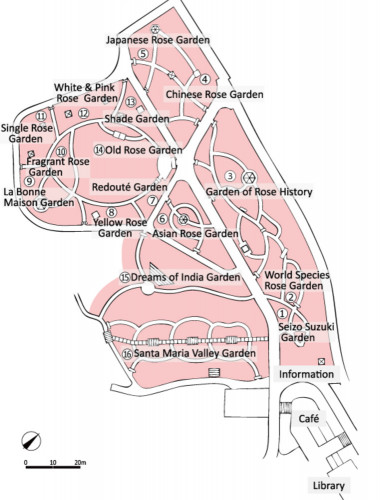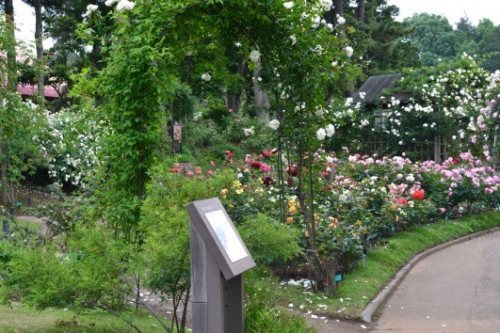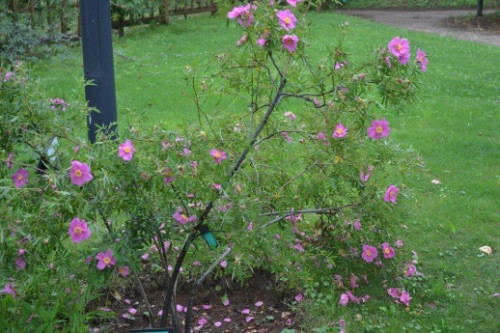English
Garden Map
The rose garden is divided into 16 sections. We are aiming at a rose garden which will harmonise with the traditional landscape of the Japanese countryside, where visitors can feel at home, and fully enjoy the delicate colours and fragrances of the flowers.
① Seizo Suzuki Garden (SS)
Roses bred by Seizo Suzuki are planted near the entrance of the garden. The white arch in this garden was given to Mr. Maebara by Mr. Suzuki, when he closed his first rose nursery, Todoroki-baraen.
In October 2013, Mr. Kojiro Kobayashi, grandson of Mr. Seizo Suzuki, donated a beautiful relief sculpture of his grandparents to the City of Sakura Rose Garden. It was wonderful to celebrate Mr. Suzuki’s birth centenary with such a thoughtful gift!
② World Species Rose Garden (WS)
Living in Asia, we can seldom see species roses from North America; Rosa foliolosa, R. setigera, and those from Europe; R. arvensis, R. sempervirens, etc. Recently, Japanese rosarians are eager to deepen their knowledge of heritage roses. They will be very happy to see many of these wild roses in this garden.
③ Garden of Rose History (H)
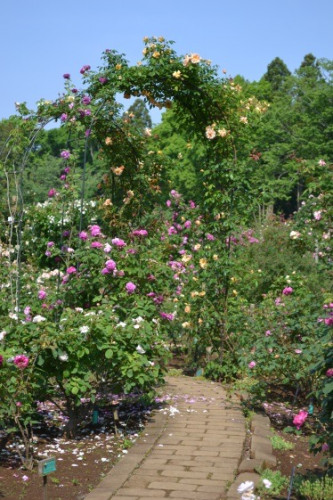
Roses are planted in this garden so we can learn their history of breeding: from ancient varieties in China, Europe, to modern roses. We are very grateful to the Vintage Gardens and Mr. Gregg Lowery for their gift of rare antique roses planted in this garden.
④ Chinese Rose Garden (Ch)
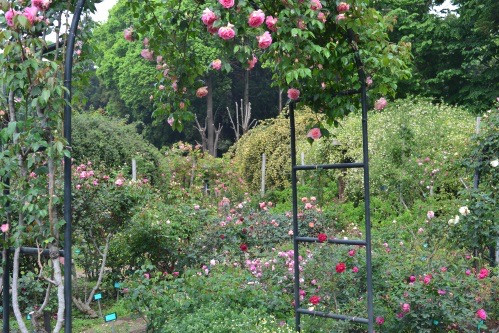
Roses from China and varieties of China roses are planted in this garden. Please check a rose which is very similar to ‘Hume's Blush Tea-scented China’ found in Laos by Mr. Maebara and Prof. Ueda. You can see roses from Huaian Rose Garden (Jiangsu Province, China), here, too. They are all with Chinese names, like ‘Shui Mei Ren’, which means Sleeping Beauty.
⑤ Japanese Rose Garden (J)
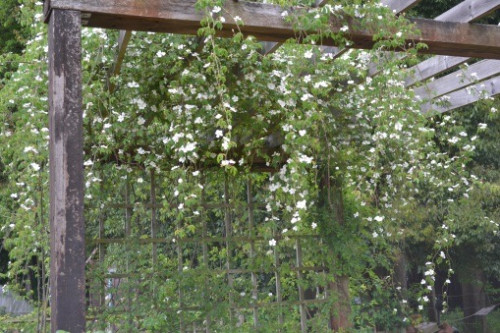
All kinds of wild species from Japan and their offsprings are represented here.
⑥ Asian Rose Garden (A)
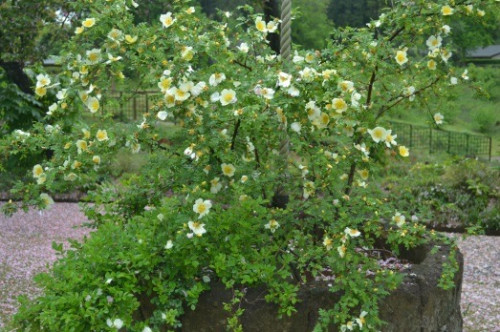
R. gigantea from Yunnan and India, R. rubus and R. multiflora var. cathayensis from Sichuan, and many other species roses from Asian countries are planted in this garden.
⑦ Redouté Garden (R)
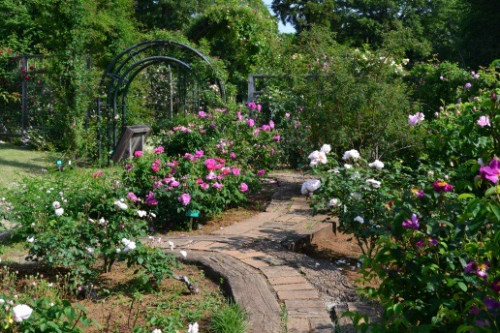
Redouté, widely known as a rose painter, painted 169 roses (89 cultivars and 80 wild roses) for his Les Roses. However, of all those cultivars he painted, only twenty or so still remain today. In this garden, you can see 17 cultivars and 5 wild roses he painted. When you see them giving the same flowers as those in his pictures, you will be impressed with the wonder of roses which have long retained their beauty by man's skills of grafting and cutting.
⑧ Yellow Rose Garden (Y)
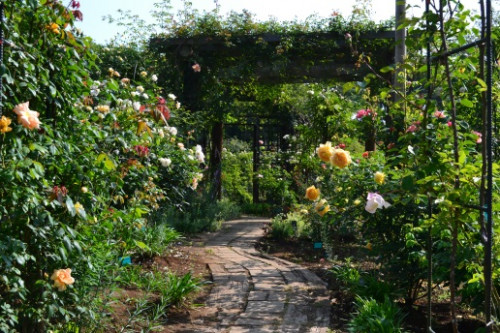
A relatively small number of heritage roses give yellow flowers. Though bright yellow colours are attractive, they sometimes disturb the harmony of colours in the landscape if placed in the wrong positions in designing a garden. We collected yellow roses here with a view to fully bringing out the beauty of their colours.
⑨ La Bonne Maison Garden (BM)
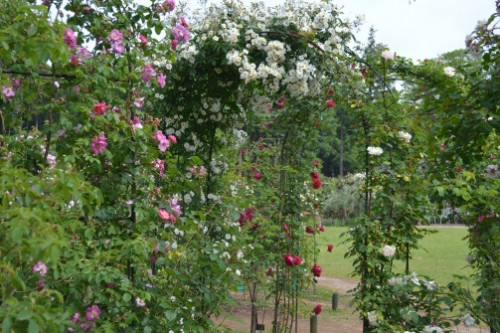
La Bonne Maison, Mrs. Odile Masquelier's garden in Lyon, is famous for its excellent collection of roses and its beautiful design. The number of roses carefully selected from her collection and donated to us is now up to 200. They are planted here, and fascinate visitors every flowering season.
⑩ Fragrant Rose Garden (F)
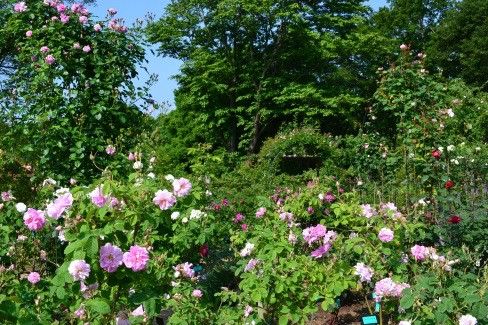
The poll we conducted among our volunteers revealed that they liked ‘Lijiang Road Climber’ best of all the roses in the garden. It was because of the gorgeous flowers it gives early in spring, and their sweet tea fragrance. In recent years rose lovers in Japan have come to place much more importance on fragrance. This garden, where roses featuring their unique fragrances are planted, will fully satisfy their interest.
⑪ Single Rose Garden (Si)
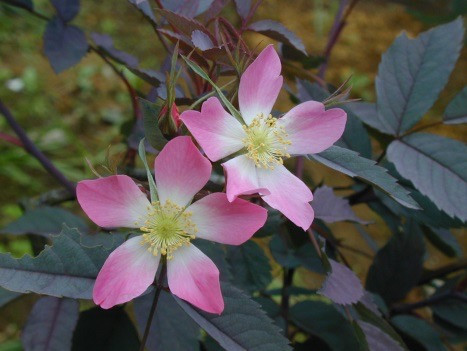
All the wild roses give single flowers. This garden displays not just wild species but also cultivars such as ‘Red Nelly’, ‘Francis E. Lester’, ‘Sally Holmes’ and ‘Nozomi’. They are all single roses which attract our attention with their unique shapes and colours as well as their fragrances.
⑫ White & Pink Rose Garden (WP)
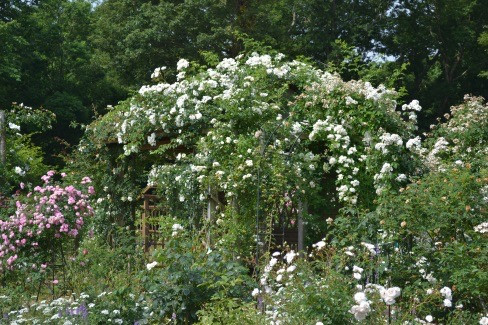
By far the largest number of heritage roses give white or pink flowers. On one side of the glass plot opposite to the Yellow Rose Garden, we planted roses with white or pink flowers. Please enjoy the blissful time sitting on a bench placed in the small cottage in this garden.
⑬ Shade Garden (Sh)

When we plant roses in our garden, we often want to have some roses which grow in good health and give flowers even in places which do not get plenty of sunshine. Here forty or so such roses are planted under the shade of a pergola thickly covered with the canes of ‘Seagull’, ‘Tea Rambler’ and other climbing roses.
⑭ Old Rose Garden (O)
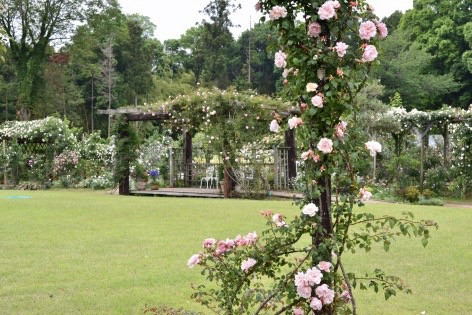
There is a large grass plot in the centre of the garden. ‘François Juranville’ and ‘Blue Magenta’ spread their canes over the wooden stage on one side of the plot. The tall poles and festoons around the plot are all covered with flowers of ‘Bobby James’, ‘Treasure Trove’, ‘Veilchenblau’, and other climbers - a gorgeous look!
⑮ Dream of India Garden (DI)
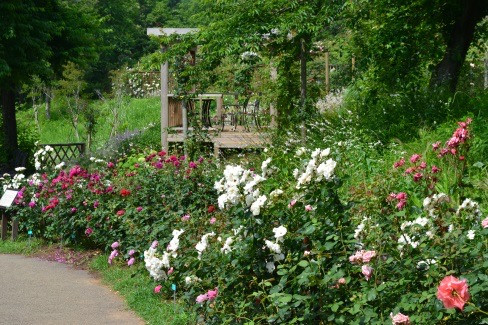
Mr. Viru Viraraghavan, a noted breeder from India, has created many rose varieties suited to the hot climate of the South Asian countries, using Rosa gigantea and other wild roses. Mr. and Mrs. Viraraghavan have so far provided us with a lot of rose-related information, and have donated to our rose garden 27 cultivars they bred. We have opened a new section named “Dream of India Garden” and planted their roses and other hybrid giganteas there.
⑯ Santa Maria Valley Garden (SM)
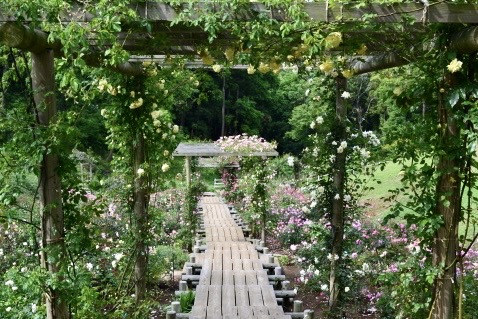
Mrs Helga Brichet, Italy, kindly donated to us as many as 184 different varieties of roses including many rare China roses and Hybrid Giganteas. They are planted in the section facing the garden shop, named “Santa Maria Valley Garden” after Mr. and Mrs. Brichet's residence. Though “Santa Maria” in Perugia is located on a gently sloping hill in the central area of Italy, we chose a south facing slope of the valley for planting Mrs. Brichet's roses, so that we can view from above the tapestry of marvelous colours many China roses display.
Library (L)
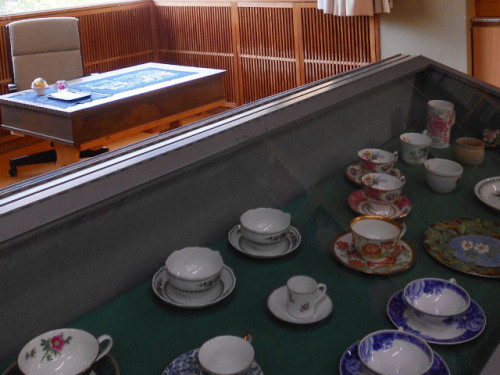
Mr. Suzuki's wife, Mrs. Haruyo Suzuki, has donated her husband's private library and favorite gardening tools, such as his secateurs, to Sakura City, and members of the Rose Culture Institute manage these precious gifts accessible to all the rose lovers who visit this rose garden. Please come to the library next to the rose café.
